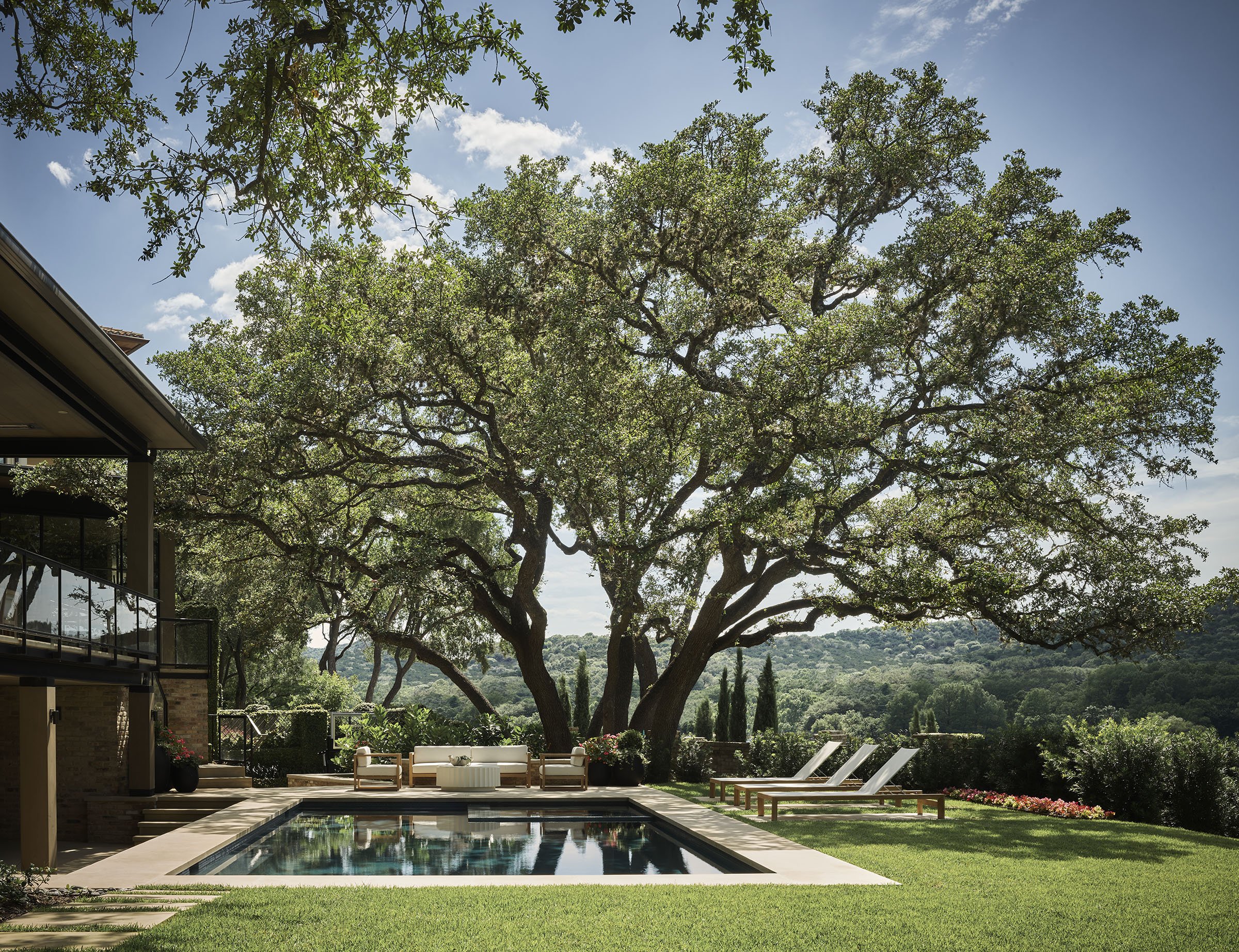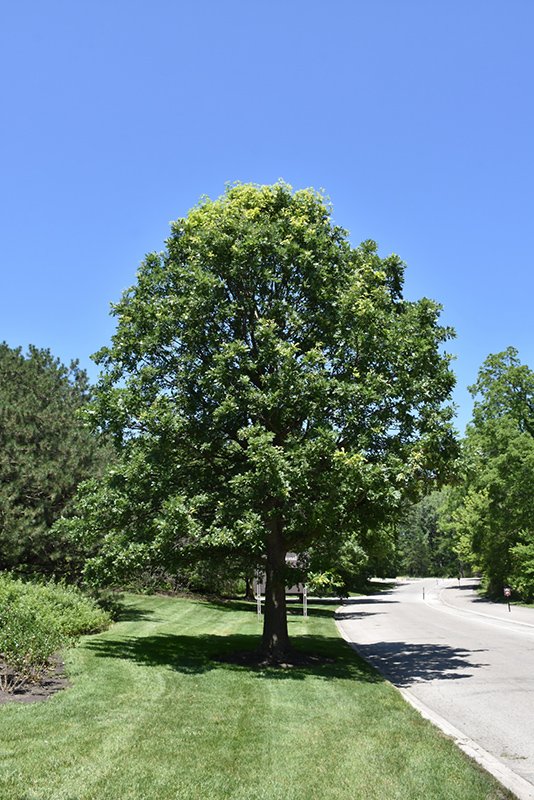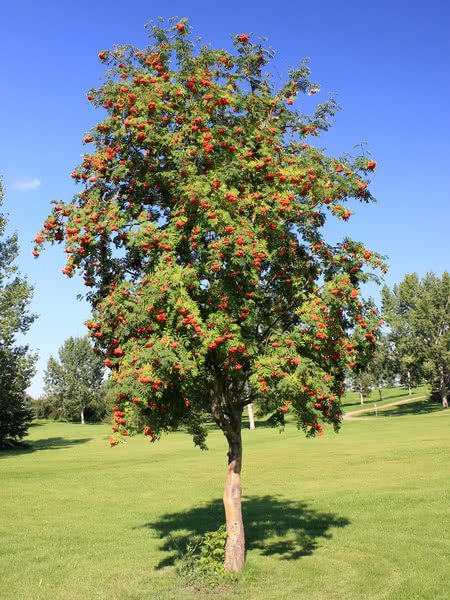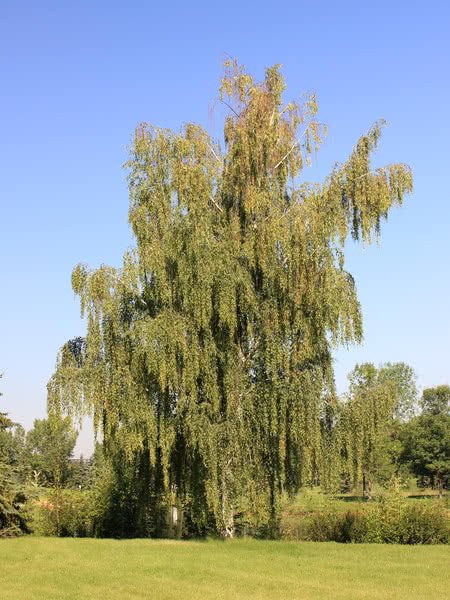The Best Trees for a Low Maintenance Yard
Let’s be honest, owning a home is a lot of work. From the daily cleaning to the seasonal maintenance and everything in-between, it can feel pretty overwhelming at times.
For those of you who may not know, my husband and I bought our first home last July and we spent the remainder of the year renovating the main floor. There were so many times during those first few weeks of demo where I found myself looking out the window, dreaming of when I’d finally be able to tackle our front yard. I’d even started a Pinterest board and filled it with beautiful images of English country cottage landscapes and golf-course-esque outdoor escapes that I swore I would come back to when it was time to clean up the front yard.
Now here we are, nearly a year into homeownership, and we’re finally at a point where we can focus on the yard. What I’ve realized though, after 10 months of renos and all the added work that comes with owning a larger space, is that I want my yard to be as low maintenance as possible. Don’t get me wrong, I still want my yard to look like those images I’ve saved on Pinterest, but I’ve decided that I’m going to be very particular about what I plant because ultimately, my home and my yard aren’t the only things I want to spend my time and energy on.
So today I thought I’d share a list of low maintenance trees that I’m considering for our yard. These trees, while not necessarily native to Alberta, all fall into hardiness zones 2 or 3 so they will do well in Edmonton’s unpredictable climate. They are also relatively hardy and quite adaptable, making them great options for a variety of gardens or backyard landscapes.
Bur Oak | Quercus macrocarpa
Bur Oak trees are incredibly hardy, extremely tough, and very adaptable. They are also excellent at attracting squirrels. This delicious tree only needs to be pruned once a year in late winter after the threat of extreme cold has passed. Otherwise they have no significant negative characteristics.
These trees should only be grown in full sunlight, but can survive in both dry and moist conditions. They can even tolerate drought conditions, making them great options for first time gardeners or those of us with very busy lives.
Tamarack | Larix laricina
Tamarack trees are incredibly unique in that they feature delicate needles that turn to a glorious gold in the fall before dropping in the winter. The best part about these trees is that they actually do not need to be pruned, which makes them incredibly low maintenance.
Tamarack trees are quite adaptable and can thrive in both full sun and partially shady locations. They prefer average to wet conditions and can even tolerate some standing water. The only downside to Tamarack trees is that they are intolerant of urban pollution, so they may not do well in a yard close to a high traffic area.
Snowbird Hawthorne | Crataegus x mordenensis 'Snowbird'
A great option for smaller landscapes, the Snowbird Hawthorne features stunning clusters of white flowers in mid-spring and red fruit in the fall. Snowbird Hawthone trees are incredibly hardy and very low maintenance.
These trees do best in full sun to partial shade and are very adaptable to both dry and moist conditions. They will not tolerate standing water, but are not picky about PH levels or soil type. It is somewhat tolerant of urban pollution so they should do well in most suburban neighborhoods.
Northwood Red Maple | Acer rubrum 'Northwood'
Northwood Red Maple trees are also a great option for those looking for low maintenance trees. These maples originated from northern Minnesota and feature brilliant red leaves in the fall and showy red flowers in early spring. These trees should only be pruned once a year in late summer after the leaves have developed as they may ‘bleed’ sap if pruned too early in the year.
These trees require full sunlight and average to wet conditions, they can even tolerate some standing water, so they are perfect for those of us who tend to over-love our plants. They also prefer more acidic soils, which makes them a great addition to a pre-dominantly coniferous landscape.
Dropmore Linden | Tilia x flavescens 'Dropmore'
A stunning addition to any backyard landscape, Dropmore Lindens are a dense deciduous tree that features clusters of buttery yellow flowers in early summer, and heart shaped leaves that turn from a dark green to an outstanding yellow in the fall. These trees are tidy, low maintenance, extremely hardy, and very adaptable. They are a great choice for attracting bees to your yard and do not have any significant negative characteristics.
Dropmore Lindens are happiest in full sunlight, and can handle both dry and moist conditions. They are not particular to soil type and are highly tolerant of urban pollution.
Evans Cherry | Prunus 'Evans'
Evans Cherry Trees are a compact fruit tree which makes them perfect for small yards. They boast stunning clusters of white flowers in the spring and loads of bright sour cherries in the summer. While these trees are extremely hardy and fairly easy to care for, the fruit can be messy if it’s allowed to drop on sidewalks so some clean up may be required. Evans Cherries are great for attracting birds and aside for a bit of clean up, do not have any significant negative characteristics.
These trees love the sun and should only be grown in bright, open areas. They prefer average to evenly moist conditions and will not tolerate standing water. It is not particular to soil PH and is highly tolerant of urban pollution
Showy Mountain Ash | Sorbus decora
Another great option for a smaller landscape, Showy Mountain Ash trees feature clusters of small white flowers in the spring and bright red berries into the winter. The deep green leaves will turn to to shades of red and orange in the fall. These trees are fairly low maintenance and only require pruning once a year in late winter. Showy Mountain Ash are a great choice for attracting birds and have no significant negative characteristics.
Showy Mountain Ash trees prefer full sun and are adaptable to both dry and moist locations. They are highly tolerant of urban pollution and will do just fine under average home landscaping conditions.
Cutleaf Weeping Birch | Betula pendula 'Dalecarlica'
One of the most popular accent trees of all time, the Cutleaf Weeping Birch has a graceful weeping form, white bark, and delicate green leaves that change to bright yellow in the fall. Cutleaf Weeping Birch trees require occasional maintenance and upkeep, and should only be pruned in summer after the leaves have developed to avoid sap ‘bleeding’. In addition to an annual pruning, these trees do prefer average to moist conditions and should not be allowed to dry out.
These trees are happiest in an an area that receives full sun to partial shade and are somewhat tolerant of urban pollution.
Gladiator Flowering Crab | Malus 'DurLeo'
Gladiator Flowering Crab trees are incredibly hardy, boasting stunning clusters of pink flowers in the spring followed by small purple fruit and burgundy leaves as the season transitions to summer. The narrow form makes them perfect for smaller landscapes. These trees do require a bit more attention then some of the others on this list as they should be pruned annually in late winter and should not be left to dry out.
Gladiator Flowering Crab trees should only be grown in full sunlight and are happiest in average to moist conditions. These trees are highly tolerant of urban pollution and can even thrive in inner city environments.
Weeping White Spruce | Picea glauca 'Pendula'
The Weeping White Spruce’s slender form make this tree an excellent option for smaller yards, while the weeping branches and blueish-green foliage would bring a unique element of interest to any landscape. This tree is relatively low maintenance and has no significant negative characteristics.
Weeping White Spruce trees prefer full sun to partial shade. They prefer average to moist conditions and should not be allowed to dry out. These trees are somewhat tolerant of urban pollution and will benefit from being planted in a sheltered location.
While this post is not sponsored, most of this information was collected from the Millcreek Nursery’s website. Millcreek Nursery is a family farm and tree nursery within Edmonton. I found their website to be super helpful in researching for this post so if you’re looking to get more information about what trees would be appropriate for your landscape I would definitely recommend checking them out.
Looking for more on landscaping? Check out these other posts:
BY EMILY RADKIE











